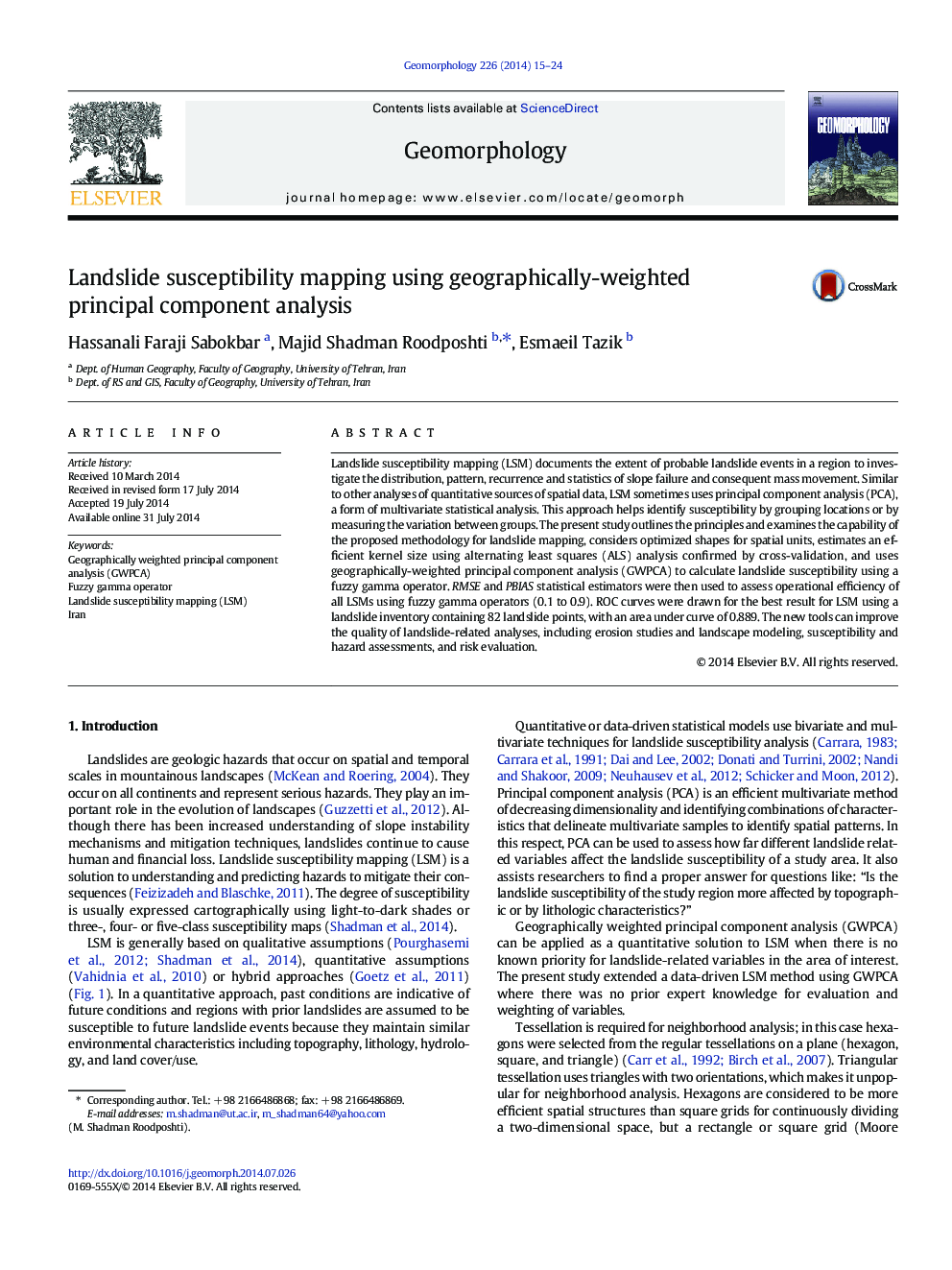| Article ID | Journal | Published Year | Pages | File Type |
|---|---|---|---|---|
| 4684437 | Geomorphology | 2014 | 10 Pages |
•We introduced a local LSM model using GW-PCA and hexagonal neighborhood.•There are unique spatial patterns of variable importance for each PC.•The geographical variations of variable importance are mapped for each PC.•Patterns of spatial susceptibility are explored and demonstrated.
Landslide susceptibility mapping (LSM) documents the extent of probable landslide events in a region to investigate the distribution, pattern, recurrence and statistics of slope failure and consequent mass movement. Similar to other analyses of quantitative sources of spatial data, LSM sometimes uses principal component analysis (PCA), a form of multivariate statistical analysis. This approach helps identify susceptibility by grouping locations or by measuring the variation between groups. The present study outlines the principles and examines the capability of the proposed methodology for landslide mapping, considers optimized shapes for spatial units, estimates an efficient kernel size using alternating least squares (ALS) analysis confirmed by cross-validation, and uses geographically-weighted principal component analysis (GWPCA) to calculate landslide susceptibility using a fuzzy gamma operator. RMSE and PBIAS statistical estimators were then used to assess operational efficiency of all LSMs using fuzzy gamma operators (0.1 to 0.9). ROC curves were drawn for the best result for LSM using a landslide inventory containing 82 landslide points, with an area under curve of 0.889. The new tools can improve the quality of landslide-related analyses, including erosion studies and landscape modeling, susceptibility and hazard assessments, and risk evaluation.
